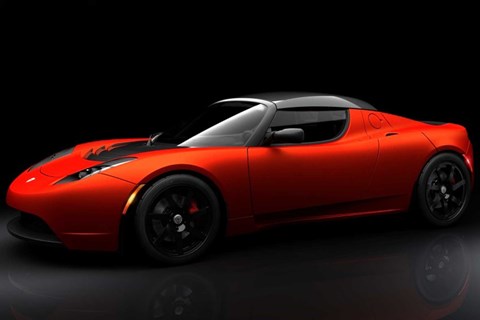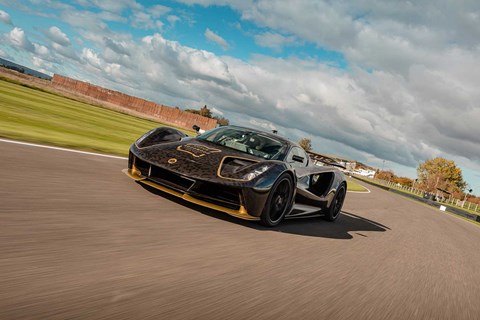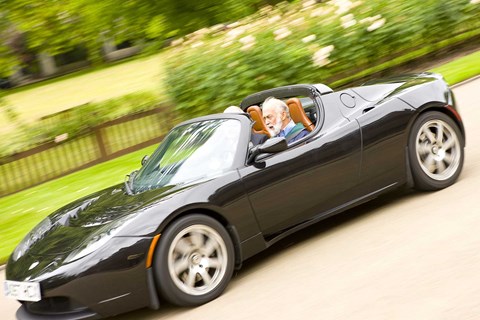► CAR talks to new Lotus Cars boss
► Windle’s years at Tesla
► And how he became an EVangelist
Working at Tesla helped crystallise a belief in electric cars and their technological potential, says new Lotus Cars boss Matt Windle.
The engineer joined Tesla in 2005, when the nascent company was working on its proof of concept, the first Roadster. This sports car was intended to be twinned with the Lotus Elise sports car, a concept far from the electric-car norm: small, often oddball cars designed for urban use, with minimal emphasis on high performance.
The Roadster was built at Lotus’s Hethel factory, and Windle was the human embodiment of the collaboration, joining Tesla from Lotus.
New Lotus Emira: first details of new 2021 V6 coupe

‘That involved a massive relocation moving across the corridor,’ jokes the 49-year-old Brit. ‘But it was quite strange, going from being able to walk everywhere on site to having a directed path to follow and not being allowed in [certain areas]. So people that I was working with the week before would shout “hey Matt” and I’d say you need to come and talk to me here, because I’m not allowed to go off this line!’
How his time at Tesla is shaping future Lotus cars
Did working with Tesla open your eyes to electrification? ‘Yeah,’ replies Windle. ‘And it made me realise what you can do with those cars as well. They come with their challenges but also a lot of benefits: heat management, packaging, and if you put the batteries at the bottom, the centre of gravity is much lower.’
Windle says that all Lotus models will be pure electric, after the final combustion-engined sports car, the Emira (Type 131), in early 2022. The first of the new breed is the Lotus Evija hypercar, targeting 1973bhp from its four electric motors.
But isn’t a sports car without a high-revving combustion engine and the engagement of changing gears missing its soul?
‘I understand: engine noise is part of the emotion,’ Windle admits. ‘But it’s about performance as well. We wanted Evija to have core Lotus DNA: performance, dynamics, aerodynamics. And that’s why the car’s been designed the way it is. The cabin is sat down below the wheels, it’s got a low centre of gravity, you can see the corners to position the car when you’re driving.

‘And when you get in a high-performance EV – and I was lucky enough to do hundreds of laps in the first Tesla Roadster around here – the instant torque, the acceleration, it’s very exhilarating as well. That’s what you’re going to get with the Evija and the others.’
Matt Windle on Lotus’s global expansion plans and a Chinese-built SUV
Matt Windle on engineering the first Tesla Roadster
Windle spent seven years at Tesla, dividing his time between Hethel and the United States, a period that spanned the Roadster’s production life and initial development of the Model S saloon. The Brit was the principal engineer on the UK side, tasked with getting the Roadster into production.
That meant lots of responsibility for decision-making, given the eight-hour time difference between Norfolk and California, and lots of decisions to take, given the vast differences between the Elise and the Roadster.
While the lightness and cost-effectiveness of the Elise’s extruded and bonded aluminium chassis attracted Tesla, the Roadster chassis ended up being bespoke with an additional 50mm in the wheelbase and space for the lithium-ion batteries.
‘Tesla was looking for a suitable platform for its [tech] demonstrator,’ recalls Windle. ‘They started with the Elise and then, because of where the technology was [such as the weight of electric propulsion], we needed a carbonfibre body to reduce the weight. [That informed] the business plan and what you needed to charge for the car.’

But the changes didn’t stop with the chassis, body and powertrain. ‘It just went on and on and on!’ jokes the engineer. ‘We used to have three categories of parts: a cat one part was Tesla unique, Tesla designed; cat two was a Lotus part that we modified and carried over. And cat three was just a complete carry-over part from the Elise. I think there were probably a few fixings in the cat three bucket in the end! No, it was a bit more than that – but not much!’
An enlightening Tesla blog lists the common parts as the windscreen, dashboard and airbags, front wishbones and the soft-top: fewer than 7% of the parts total by number.
What did Matt Windle learn from Elon Musk?
Windle credits tech entrepreneur Elon Musk with influencing his management style. ‘Working with Elon laid the foundations for my management style: make decisions, look after and empower people but concentrate on the actions immediately in front of you that need to be achieved so that you can achieve the overall strategy.
‘Elon was very clear on that, and empowering people. You spend a lot of time bringing in a team that you trust and can work with. I just don’t understand bosses that then tell those people what they need to be doing!’
Windle reckons he might have stayed at Tesla had the UK operation not been wound up. Since then, he has risen to the heights of running Lotus Cars, and Tesla has peaked as the world’s most valuable autos company.
So does Matt Windle still own any shares in Tesla? ‘I couldn’t possibly say…’ he grins.